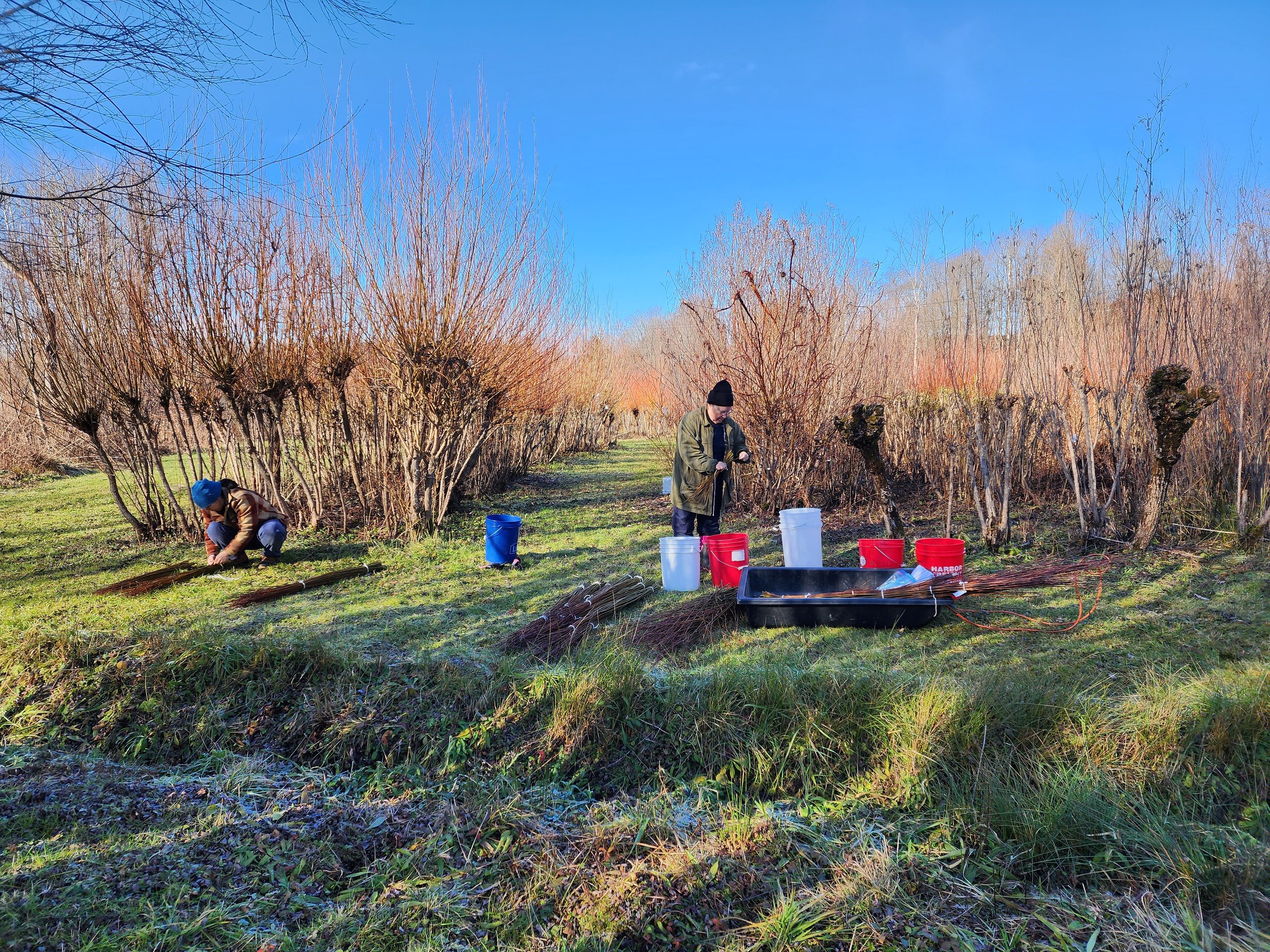The Gage Salicetum
Have you ever heard of Pollarding Willow? I had heard of it, I had seen it in pictures, but never did I think I would find someone so close to home that was actually doing it!
A few weeks back I was invited on a willow excursion by Jes Clark of Willow Vale Farm, to visit two local NY willow basket makers and growers, Teresa Gage and her mother Jean Gage. I can’t even begin to explain the incredible experience it was working and learning with these two amazing women, who have been mastering the craft of willow basketmaking over the years. Jean actually has one of her baskets in the Renwick Gallery at the Smithsonian American Art Museum, but to be honest it was more thrilling to see some of their personal collection and to chat about past makers, teachers, conferences and friends.
Even though we could have talked for hours we were on a mission to get some willow harvested, and to my surprise, it was going to be a very different harvest than I had ever seen before.
Teresa is the one behind the expansive and beautiful Salicetum or “collection or plantation of living willows.” She took an interest in growing and collecting willows not only from other basket makers around the globe, but also wild willows found growing around their home in NY. Teresa would check with her mother on the proper characteristics of any found wild willows, and if they were suitable for basketry they would be futher cultivated. Theresa and Jean were so very gracious to have Jes and I come to learn how they grow and harvest this stunning collection of willows.
It was both by design and chance that Teresa started to pollard her willows. Allowing her a greater ability to harvest in winter months when there is snow on the ground. It also relieves the stress on the harvester, who would typically need to bend or kneel down to coppice willow all the way at the ground. Pest control is another benefit; bunnies and deer have a harder time destroying a crop that they can no longer reach. As willow basket makers we know all these things, and they are talked about in circles, but never have I seen anyone who has been pollarding in this capacity. All I kept thinking the whole time, was that I need to start doing this with my own willow! It’s totally brilliant, and why are there not more growers doing it this way!?!?!?
Teresa is so organized, both in her planting and her harvesting techniques. It was such an amazing learning experience for me to see and try all the techniques, from how to cut and bundle to the nuances of growth within varieties. Makers like Teresa are so valuable to people just starting out like myself. To be able to see willow beds that were 30+ years old gave me such a sense of hope and excitement for my own beds, and how they will inevitably change and evolve over time.
We harvested, sorted and bundled over 20 different varities. Teresa gave us as much information about each as she could. Recalling information about where they were found, or who sent them to her, and the characteristics of their growing habits and preferences.
Teresa even has a small tank for pitting willow, cut into a natural spring on her property. Brilliant ideas that gave me so much to consider and plan for.
We helped Teresa with as much harvesting as possible, and she was super gracious to offer us cutting in return, with the hope that we will be able to further the lines of her wild-cultivated varities. Since both Jes and I are in New York, it feels so very special to adopt these varities and protect their existence into the future. Teresa is in a colder zone (possible 3) than my own farm (possibly 4-5) and it was extremely interesting to see and learn how both zones and elevation can change the behavior of the willow. My higher elevation may bring me closer to the patterns of Teresa’s willow. I will be extremely excited to see how her willows do in my fields, and it’s my guess they will be happy since we are practically neighbors.
Photo by Teresa Gage
Photo by Teresa Gage
I’m so very grateful for Jes and Teresa to include me in this opportunity. We had two gorgeous days of sun and relatively warm weather right before NY decided to dump several inches of snow.
I am so honored to be part of the community of Willow Basket makers here in the Northeast, and it brings me such joy to learn from so many talented and kind makers who are willing to share all their knowledge and skills in order to keep this craft alive into the future.










